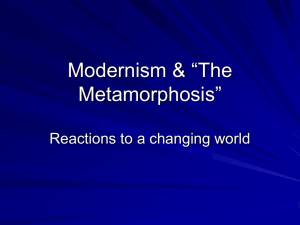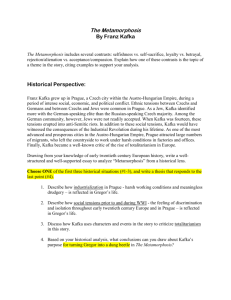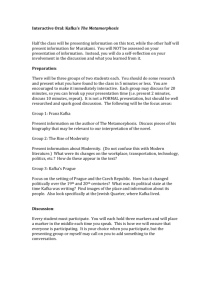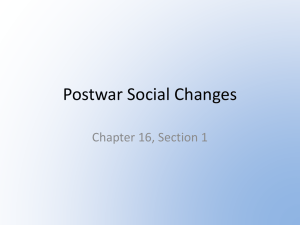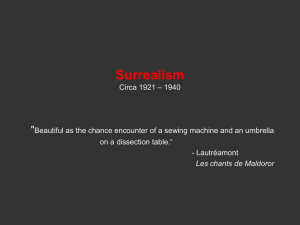Examine the painting. What do you see? What do you think the
advertisement
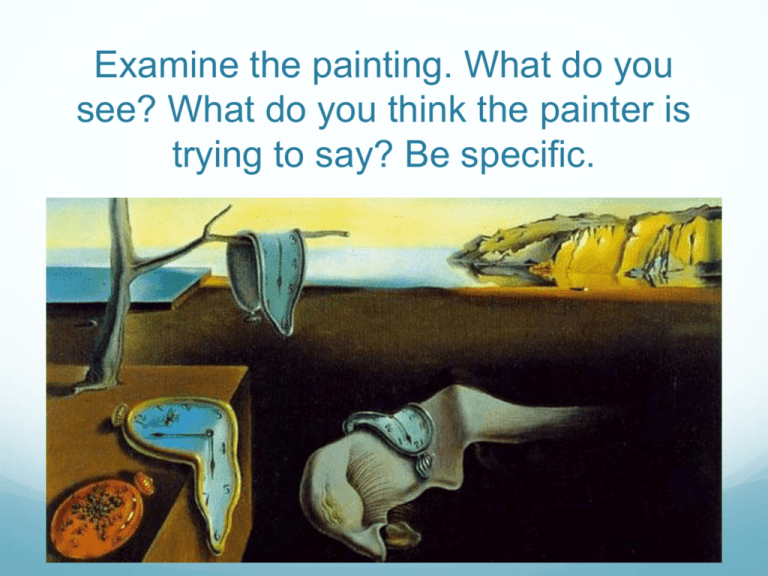
Examine the painting. What do you see? What do you think the painter is trying to say? Be specific. What is Surrealism? Cultural movement that began in the 1920s Aim is to “resolve the previously contradictory conditions of dream and reality” Surrealist works feature: Element of surprise Unexpected juxtapositions and non sequitur Expression of the philosophical movement Surrealist Manifesto Andre Breton, leader of Surrealist movement, asserted that Surrealism was a revolutionary movement Dictionary: Surrealism, n. Pure psychic automatism, by which one proposes to express, either verbally, in writing, or by any other manner, the real functioning of thought. Dictation of thought in the absence of all control exercised by reason, outside of all aesthetic and moral preoccupation. Encyclopedia: Surrealism. Philosophy. Surrealism is based on the belief in the superior reality of certain forms of previously neglected associations, in the omnipotence of dream, in the disinterested play of thought. It tends to ruin once and for all other psychic mechanisms and to substitute itself for them in solving all the principal problems of life. What is Existentialism? Late 19th and 20th century philosophers believed that philosophical thinking begins with the human subject – not merely the thinking subject, but the acting, feeling, living individual The Existential Attitude: individual’s starting point A sense of disorientation and confusion in the face of an apparently meaningless or absurd world Examples in art: Fight Club, The Matrix, Toy Story, Groundhog Day, The Shawshank Redemption, Ordinary People What is Expressionism? Originating in Germany in the early 20th century, its typical trait is to present the world solely from a subjective perspective, distorting it radically for emotional effect in order to evoke moods or ideas Artists sought to express meaning or emotional experience rather than physical reality Franz Kafka Born in 1883 to a well-to-do middle class Jewish family Educated in German language schools of Prague and at the German University Graduated with law degree, but decided to focus on literature Only published a few short works during his lifetime “The Metamorphosis” in 1915 Kafka’s Life Lived as a lonely outcast in many ways A German-speaker among Czech-speakers A Jew among Christians Had an overbearing, selfish, businessman father Didn’t live alone until he was 33 Lived in poverty and cold weather, so his illness got worse and worse SAMSA = KAFKA Died in 1924 (at 41) of tuberculosis and ordered that his manuscripts be burned His friend (and fellow writer) Max Brod instead published Kafka’s works posthumously “Kafkaesque” An unsettling, nightmarish world that is at once both fearful and menacing in its ambiguity and complexity “Kafka’s haunting, disturbing, and sometimes grotesque images, combined with his struggling but ultimately defeated heroes, defined an age wherein alienated man – the anti-hero – grappling with meaning and justice in an inscrutable world, is denied answers to both.” The Metamorphosis “When Gregor Samsa woke up one morning from unsettling dreams, he found himself changed in his bed into a monstrous vermin.” Metamorphosis: A change of physical form, structure, or substance. A fundamental change in form and often habits of an animal accompanying the transformation of a larva into an adult What is The Metamorphosis really about?? Is it literal or figurative? Themes of The Metamorphosis Alienation at Work Father-Son Antagonism Betrayal Isolation and Self-Sacrifice Escaping Seizing Power
